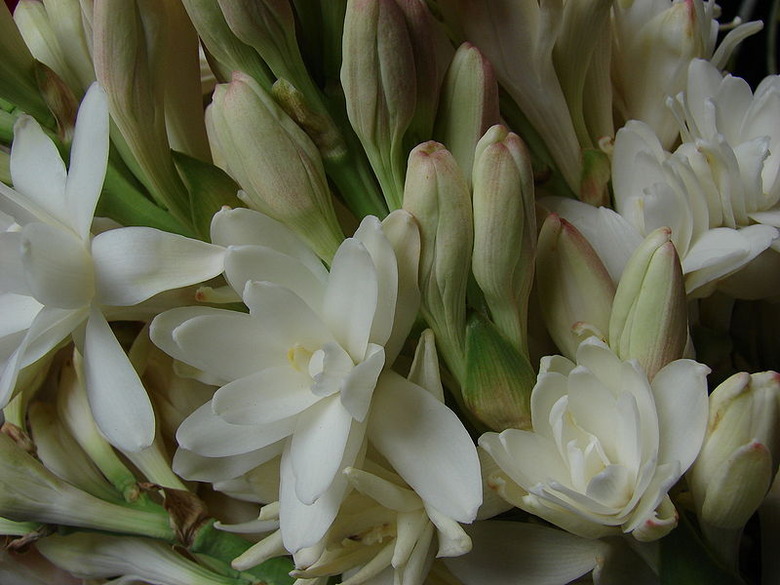How To Care For Tuberose Bulbs
Things Needed
- Hand trowel
- Water
- Bulb fertilizer
- Low container
- Clean sand
- Sphagnum peat moss
- Secateurs
Tuberose is a large family of tender perennial flowering plants grown from underground bulbs. Tuberose performs best in full sun exposures in moist rich soil and grows and naturalizes itself in a clumping habit. Bloom size, structure and color varies widely depending on the varietal. Some varietals have a sweet exotic scent. Hardy in USDA zones 8 through 10, tuberose bulbs can be dug and carefully stored over winter in cooler climates and then replanted in the spring.
Step 1
Plant tuberose bulbs in the spring after the last frost has passed and overnight temperatures are consistently above 50 degrees Fahrenheit. Bury bulbs three inches deep in well-tilled soil at intervals of 4 to 6 inches apart, depending on the density of planting that you are looking to achieve. Water in the bulbs at planting and then not again until green shoots begin to emerge from the soil. Lay down an inch thick layer of shredded bark, cocoa hulls or compost to enrich the soil and prevent moisture loss to evaporation.
- Tuberose is a large family of tender perennial flowering plants grown from underground bulbs.
- Bury bulbs three inches deep in well-tilled soil at intervals of 4 to 6 inches apart, depending on the density of planting that you are looking to achieve.
Step 2
Cut flowers on fresh stalks for household arrangements as desired. Prune spent blooms and dying or damaged foliage throughout the growing season as you see them. After the last blooms of the season fade, let the flower stalks and foliage yellow and die back in place. This will redirect remaining plant nutrients back into the bulb, recharging it for next season's bloom.
Step 3
Dig the tuberose bulbs for winter storage in climates cooler than USDA Zone 8. With a trowel in hand, carefully dig a wide circle around the plant base and at least 8 inches down into the soil to dislodge the bulbs. Brush off any excess dirt, chop off the now desiccated top foliage and set aside.
- Cut flowers on fresh stalks for household arrangements as desired.
- With a trowel in hand, carefully dig a wide circle around the plant base and at least 8 inches down into the soil to dislodge the bulbs.
Step 4
Prepare a shallow storage tray or low plastic container filled with just slightly damp clean sand or sphagnum peat moss. Nestle the clean bulbs into the storage medium and cover them three-quarters of the way. Set the tray in a dark, cool (but never freezing) location to ride out the winter. Check on the bulbs periodically to ensure that they are not drying out completely and shriveling up. If they seem overly dry, mist the bulbs and the medium with tepid water. Do not cover the container.
Step 5
Water from the spring through the growing season to keep the soil uniformly moist. Feed with a bulb fertilizer in the spring after shoots emerge and again in the fall to nourish the bulbs in anticipation of winter.
- Prepare a shallow storage tray or low plastic container filled with just slightly damp clean sand or sphagnum peat moss.
- If they seem overly dry, mist the bulbs and the medium with tepid water.
